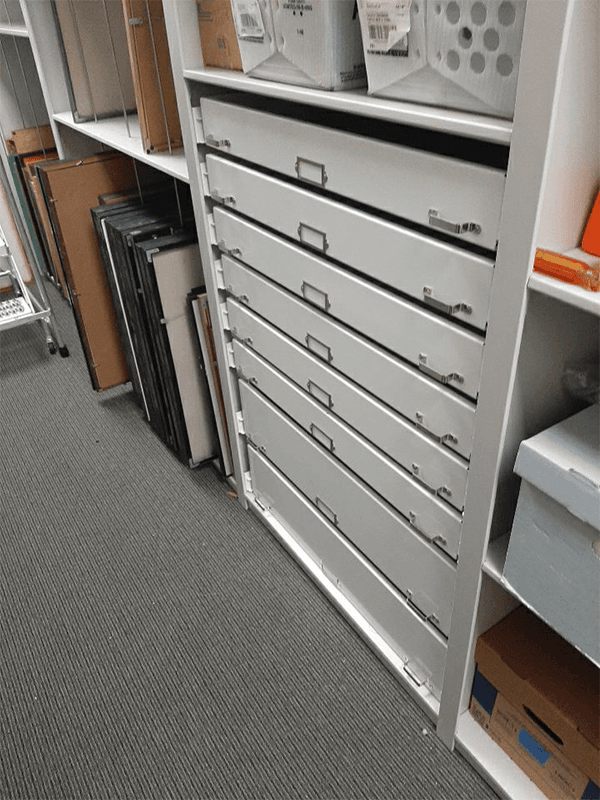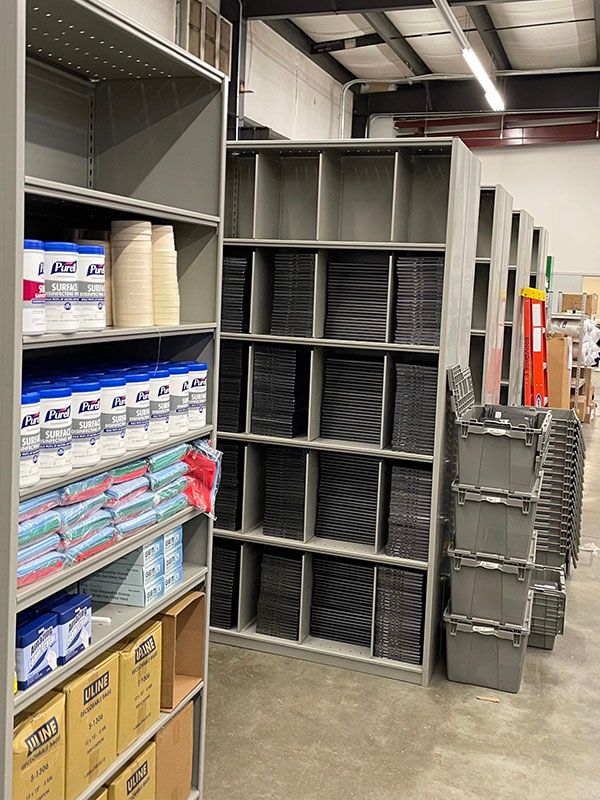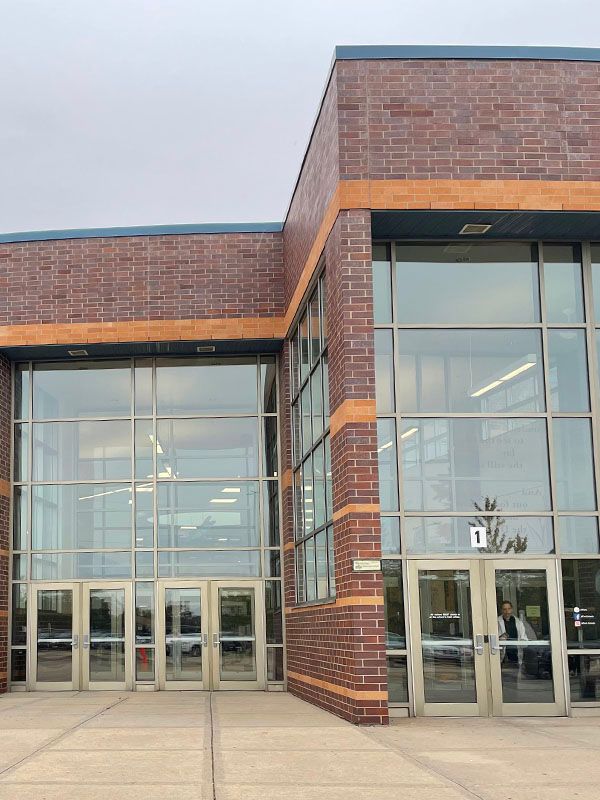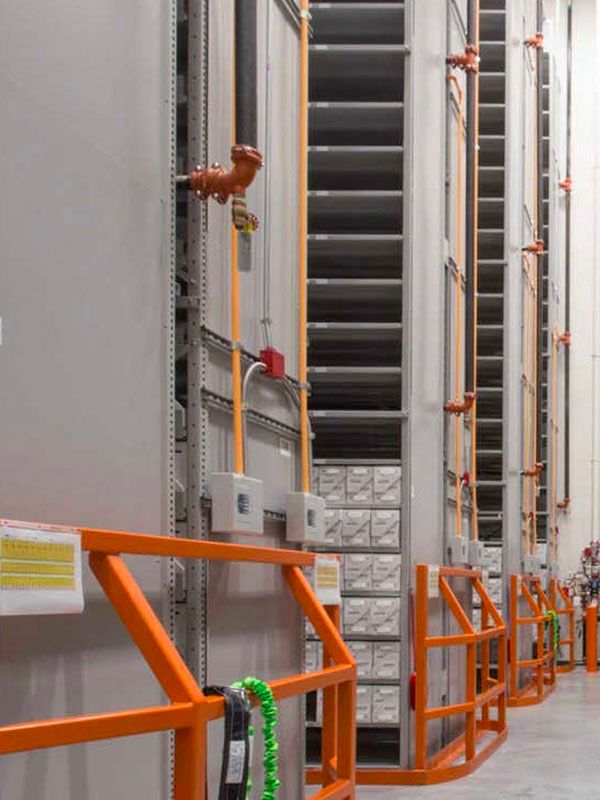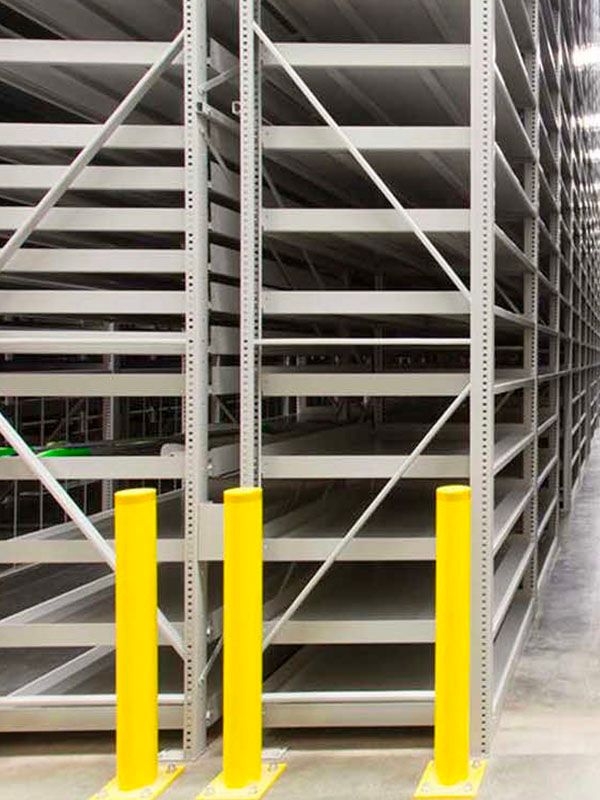Madison, Wisconsin
A Partnership on the Shelf
Efficient off-site library storage is so much more than finding a place for books. For the University of Wisconsin-Madison, it’s a way to keep students happy and maintain a reputation as one of the top research universities in the world.
Offsite Library Warehouse
Ten miles southwest of the vibrant energy of the University of Wisconsin-Madison campus, an unassuming warehouse sits just off a wooded country road in Verona, Wisconsin. From its modest location and stature, not many would guess that this warehouse is currently home to over 100,000 volumes of rare books, manuscripts, and thesis works—with the goal to store well over a million volumes in the space over the next several years.
For UW-Madison, the warehouse and its archival book storage represents more than just a place to store volumes—with 42 libraries stretched across the campus, it’s also a critical investment in the future of the university’s library system.
Early on, the UW-Madison Libraries witnessed a trend akin to countless libraries around the world—libraries started to become less static and more dynamic. The days of a library simply being a place to access printed materials or serve as a quiet place to study were numbered, and spaces were transitioning to collaborative, social spaces with access to advanced technology.
The Space Management and Shelving Group at UW-Madison came to a realization—if alternative space for shelving and materials could be made available, approximately 30,000 square feet of library space across the campus could be immediately renovated to provide study spaces, computer-enhanced learning facilities, and updated library services.

The Estimated capacity of the fully-loaded High-Bay archival storage system at the Verona Shelving Facility is 1,216,836 volumes. The UW Libraries expects to fill the system in about five years.
Making Room to Grow
At the same time, UW-Madison ranks as one of the most prolific research universities in the world. While technology has offered a way for many collections to be digitized, the university recognized there would always be a need for physical resources. In order to stay competitive, the library system knew they needed keep the materials they currently possessed while retaining the capacity needed to collect additional materials, and above all, keep those materials safe and useable for future and current researchers alike.
"I often refer to shelving as a lynchpin—because we’re doing other things with the space that print once occupied. We’re completely rethinking how we’re using the spaces in our libraries today."
- Ed Van Gemert, Vice Provost for Libraries, University of Wisconsin-Madison
Library staff knew these two priorities could co-exist, and with that, they started researching the most efficient way to store as many volumes as possible in the 10,000 square foot Verona Shelving Facility building. Having partnered with Spacesaver for storage solutions in countless buildings on the UW-Madison campus, collaborating on this groundbreaking project was a natural fit.
“We’ve worked with Spacesaver for decades on multiple projects, beginning when we put high-density shelving in the Kohler Art Library,” says Ed Van Gemert, UW-Madison’s Vice Provost for Libraries. “They provide a tremendous solution to our growing shelving and storage needs.”
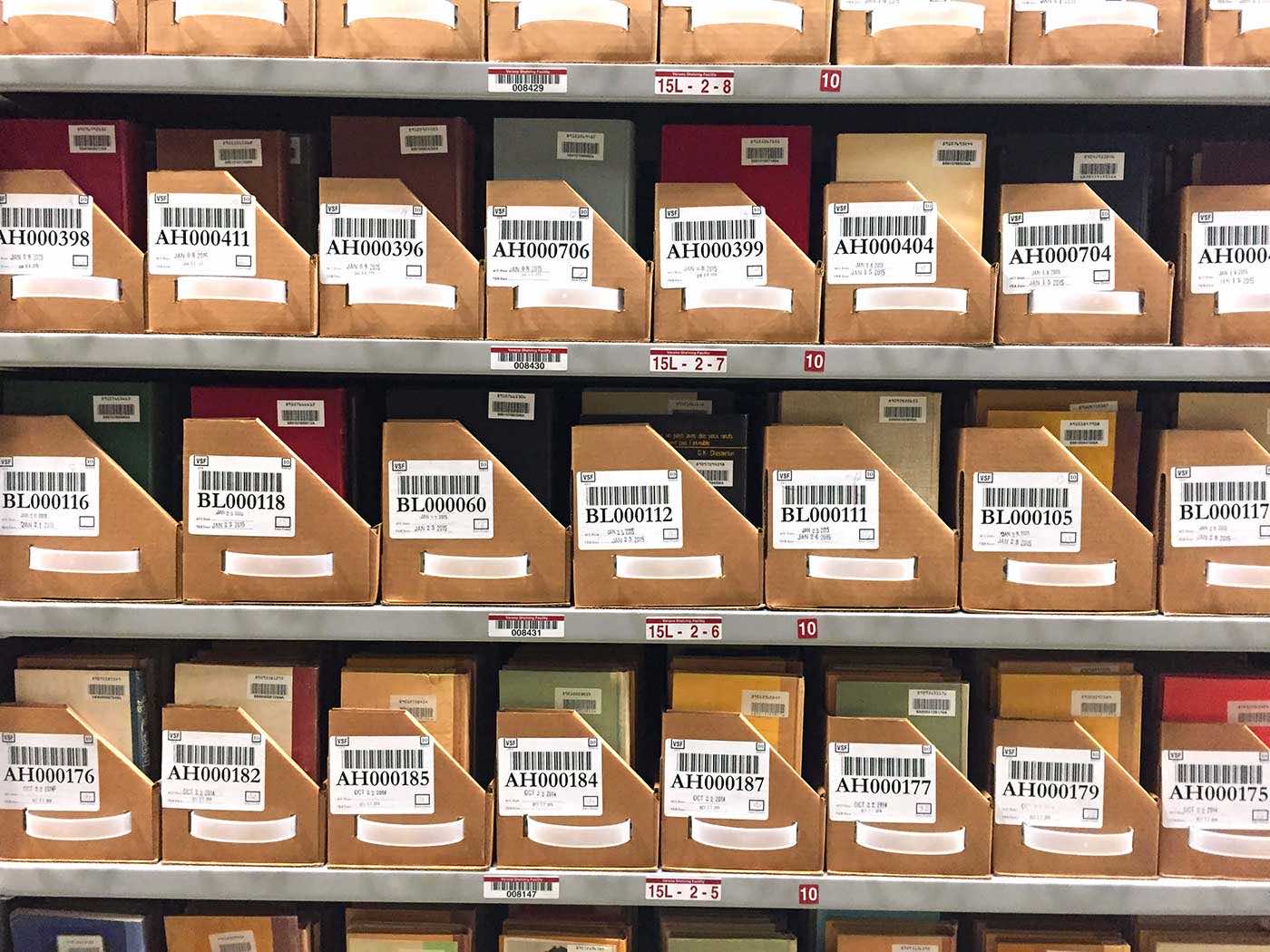
The number of usable, adjustable shelves on the system is 5,436.
Custom Electric Highbay Shelving
Working closely with the facility’s architects as well as library staff on the Verona project, Spacesaver’s sales team, project managers, and engineers designed an XTend® High-Bay Archival Shelving System with 12 moveable carriages, each 18.5’ high and just over 60’ long. There are over 5,300 useable shelves in the system, each with a maximum capacity of 768 pounds. All of those numbers translate into one important one—the archival book storage system has an estimated capacity of over 1.2 million volumes, meaning the UW Libraries can plan for the future in all of the ways they envisioned.
The storage system features three moveable bays, which enables one Verona staff member to retrieve materials in one unit and still have access to two other units. “That was something Spacesaver designed for us that we didn’t even think about,” says Heather Weltin, Facilitator for Cooperative Sharing & Storage at UW-Madison. Within the bays, fully adjustable shelves ensure optimum storage density, as everything on Verona’s shelves is arranged not by title, author, or subject, but by size.
Custom Loading Carts
In order to efficiently access materials from the moveable order bays, Spacesaver designed three custom carts to fit the facility’s order picker. These carts double as a workspace and provide a significant time savings for the facility’s two full-time employees. “The carts allow us to load and unload the volumes while we’re up in the picker, and since they’re able to go up with us, it’s very efficient. The staff is able to have their trays right there in addition to having space for writing or anything else they might need to do. Being able to do the work you need to do right here instead of having to come back down is extremely convenient for us.”
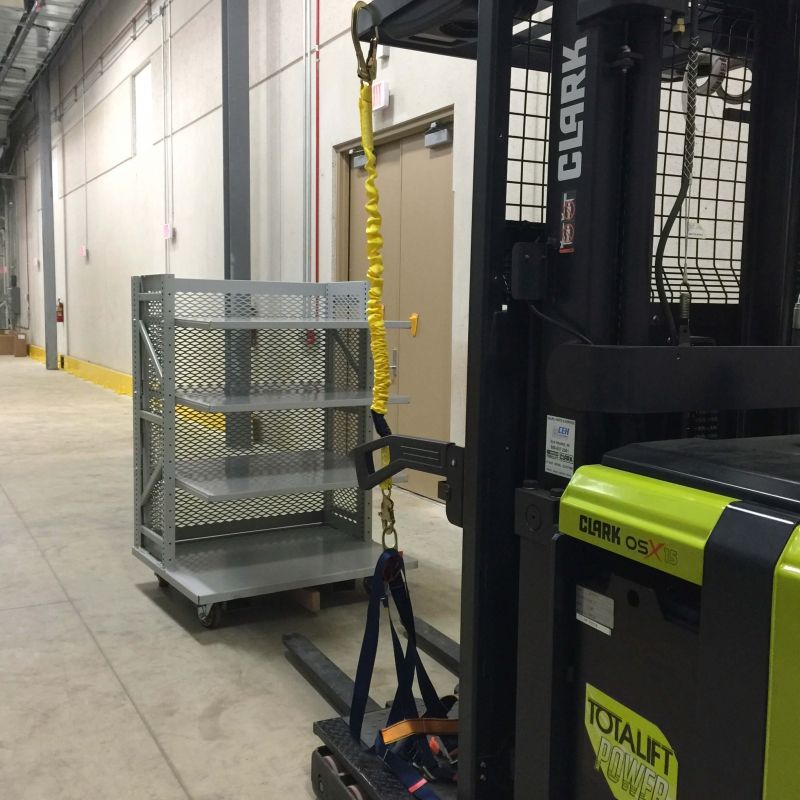
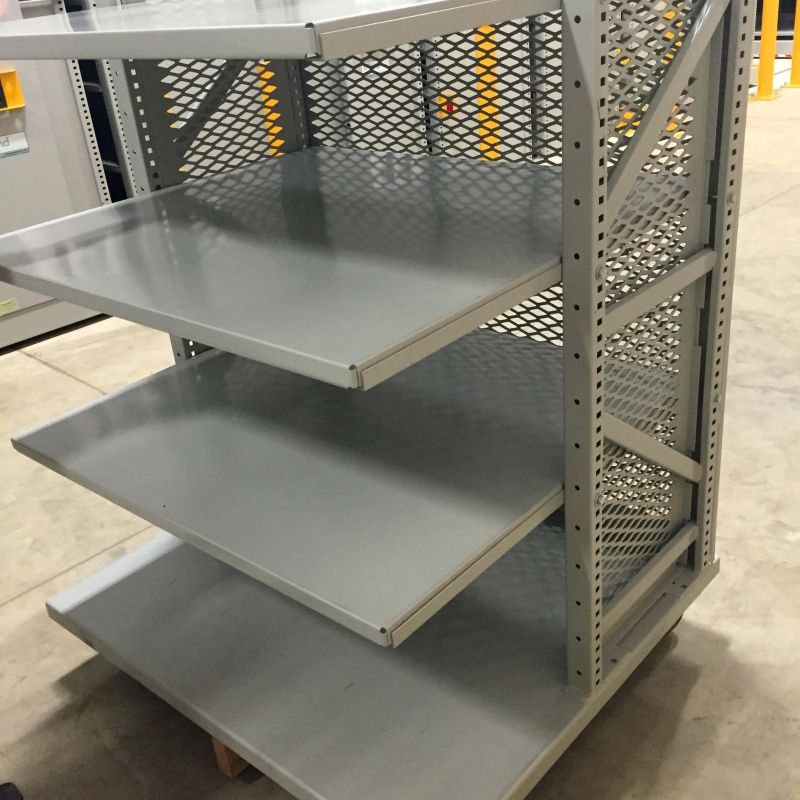
The storage thinkers at Spacesaver also were able to assist in additional ways, working to make sure the installed high-bay system worked in tandem with facility’s infrastructure, from the climate control needs and the fire suppression system to the archival system used by the library staff. The aisle floors of the system were even outfitted with wire guidance that automatically guide the facility’s order picker to guarantee the equipment won’t get damaged and most importantly, to ensure user safety while the lift is in operation.

30,000 square feet of library space is available for the University of Wisconsin-Madison campus to renovate and upgrade into collaborative spaces, study rooms, and more upon the migration of materials to the Verona Shelving Facility.
Integrated Archival Book Storage Solution
The archival book storage at Verona Shelving Facility currently holds 1.5 miles of volumes, and is expected to take several years to fill the estimated storage capacity of 1.2 million volumes. In the near future, everything placed in the facility will be made available to users who request particular materials, and the new shelving system ensures users won’t experience delays in accessing materials they need.
What looks to be a simple warehouse on the outside is filled with the latest technology. This integrated archival book storage solution allows the library system of a world-class university to not only meet the demands of new and reinvented library spaces for an ever-evolving student population, but also to best serve its wide range of researchers and users.
"It’s a masterpiece, and the future it’s allowing us to have will have a great impact on the campus and the libraries’ future."
- Heather Weltin, Facilitator for Cooperative Sharing & Storage, University of Wisconsin-Madison
“I often refer to shelving as a lynchpin, because we’re doing other things with the space that the print once occupied,” says Van Gemert. “We’re completely rethinking how we’re using the spaces in our libraries today.” Weltin agrees, and adds, “It’s a masterpiece, and the future it’s allowing us to have will have a great impact on the campus and the libraries’ future.”
Considering a High-bay Facility?
Freeing up library space benefits student collaboration and studying. When building an off-site library storage facility, consider storage solutions early in the process. It is well worth the effort, as the building’s footprint and purpose can be tied directly to the way shelving is implemented.
Considering a High-bay Facility?
Freeing up library space benefits student collaboration and studying. When building an off-site library storage facility, consider storage solutions early in the process. It is well worth the effort, as the building’s footprint and purpose can be tied directly to the way shelving is implemented.

